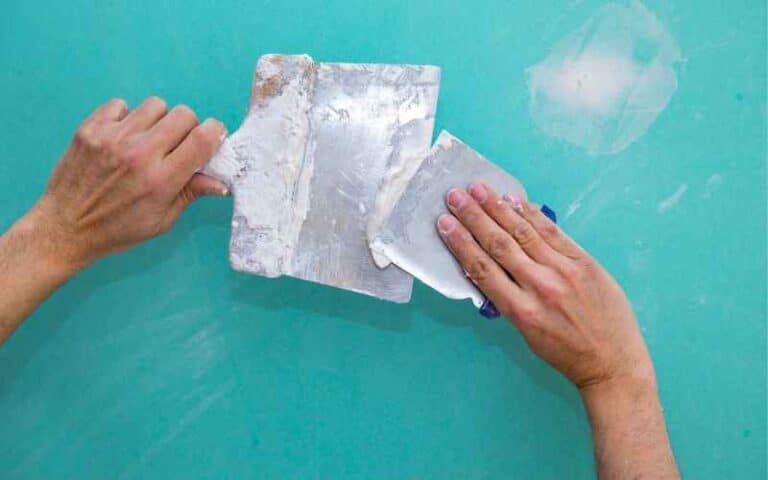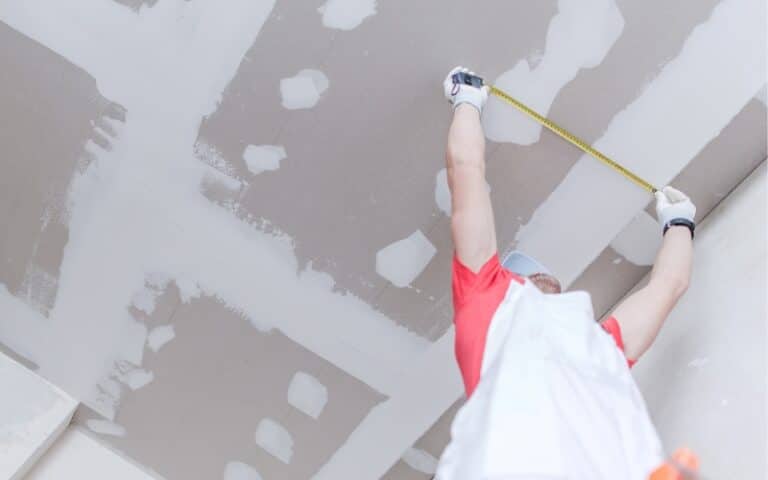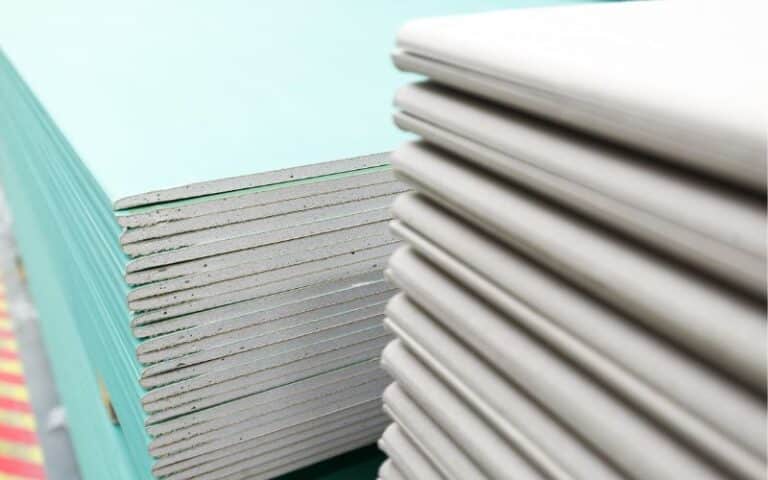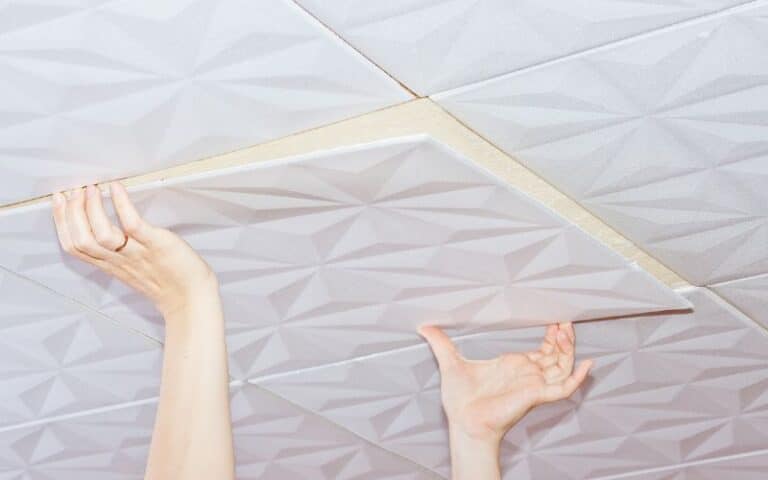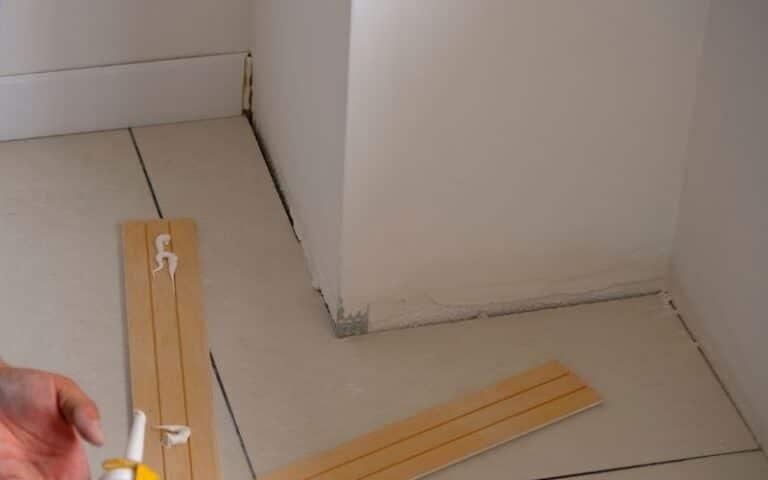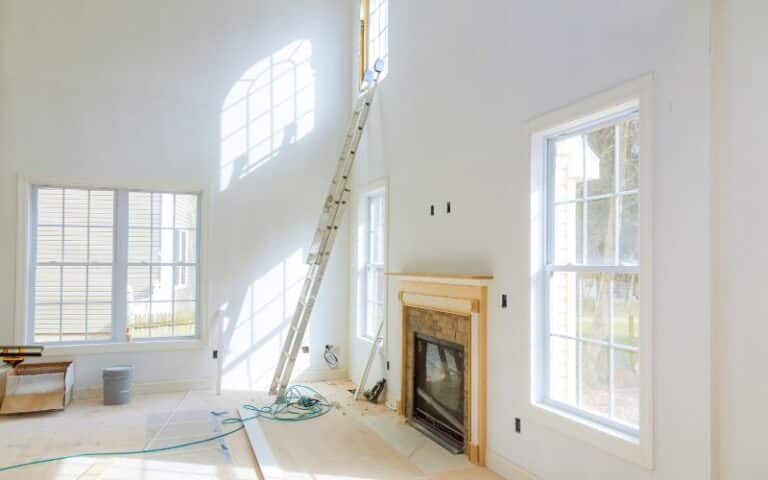The home improvement and painting niche is very challenging because you need to use the right materials for everything. Just the wrong choice can cripple hours of hard work.
The same thing applies to taping drywall corners. Can you use mesh tape, or should you avoid it completely? This question has plagued the minds of several DIYers.
Even though it’s not the perfect choice, you can use mesh tape for drywall corners, although it’s harder to use. Paper tape does a better job of taping drywall corners because it is easier to fold. Mesh tape is more difficult to fold and does not hold a crease like paper tape.
In this article, you’ll learn everything you need about taping drywall corners and seams with paper and mesh tape.
You’ll also find out the differences between the paper tape and mesh tape. So, without further ado, let’s begin, shall we?
Ready for a Drywall Quiz?
Can You Use Mesh Tape for Outside Corners?

Yes, you can use mesh tape for the outside corners, but it’s not the best option. Paper tape is the best choice because of the indentation it has in the center.
The indentation in the center makes paper tape easy to fold. You can fold it in half and apply it at the corner easily, and you’ll get a crisp, tight corner.
The mesh tape may work, but it isn’t easy to fold because of the adhesive. Mesh tape, like Scotch tape, has adhesives.
It won’t stay folded perfectly, and the knife may not catch it if it does not stay deep enough in the corner. Getting that 90 degrees angle at the corner is difficult, and you must be careful.
How to Use Mesh Tape for Drywall Corners?
Taping the outside corners is pretty straightforward. You’ll need three compound coats and corner beads.
#1. First Coat
As you go through the taping seams, apply the joint compound to the corner bead. The areas where corners or seams join the corner bead should blend in.
You should use a taping knife (5-inch or 6-inch) to cover the joint compound with the bead.
After that, press the compound, so it comes into place with the beveled trowel edge or the taping knife.
After that, pull the trowel, smooth out the compound, and feather the edge along the surface of the drywall.
Some types of beads, like the newer tape-on beads, are tight-fitting, so you only need a third (finish) coat and one fill coat.
In this situation, you can use a wider first coat (fill) coat and try to make it smooth.
If your doorway is covered in corner beads, it’s best to use mesh tape (fiberglass) at the corners to strengthen the site where the beads meet.
#2. Second Coat
You can easily second-coat the outside corners because the edge of the corner bead is raised and functions as a screed.
You can use it to smooth the compound. Administer the joint compound to an area that’s about 10 inches wide.
After that, you can use a beveled trowel or a wide-taping knife to put pressure on the joint compound outside the edge and the edge of the corner bead.
Try to hold your trowel so that it is flat (almost) against the compound. When you finish the second coat, the outer edge, which is raised, will still be visible.
The edges should be feathered into the panel’s surface, and you should have a smooth center. You can tape both sites simultaneously if the inside corner or a seam joins an outside corner.
Using your 6-inch or 12-inch taping knife to blend those sites, smoothen and fill the areas as much as necessary. At the point of intersection, you only need a light touch.
You can use the knife’s edge to skim the surface so that you don’t mark up the other seams. It can be tricky if you want to blend the two seams when they are wet.
Therefore, the other option is to apply the second coat on the corner and leave it to dry before you second coat the interacting seam.
After you have installed the corner bead, the first coat compound hides it from sight, making it not visible.
The first coat must not be perfect; you must ensure that the beaded edge is clean.
When you apply the second coat, you can smooth out the rough areas and blend them into the adjoining joints.
#3. Third Coat
After you are done with the second coat, you can apply the third and final coat of the joint compound. Apply it to the outside corners in the same manner, you coated the seams.
Use a roller, a 12-inch taping knife, a topping compound, or an all-purpose compound for the final coat.
When carrying out the third coat, ensure you take more areas that need extra filling or feathering. That’s because you’ll need to take care of them before sanding.
Administer a thin layer over the entire taped area. Try to go about 1 inch wider than the last coat. Use a 12-inch tape knife to feather the joint compound.
Then, remove most of the compound and leave it behind enough to feather the edge into the drywall surface and smooth the bead.
#4. The Final Check
When you’ve finished applying the final coat, you must walk through each room and check to see if you have done a good taping job.
That should be shortly before you begin sanding.
Check the corners and seams and look for scratches, indentations, and sites where the tape is obvious.
If imperfections exist, touch them up with a mild application of the joint compound before you begin sanding.
Correct anything that needs special attention, like a crowned seam, cracks, or an overcut outlet box.
Will Mesh Tape Crack on Drywall Corners?
Yes, fiberglass mesh tape can develop cracks over time on drywall corners. That’s because fiberglass mesh tape is not as strong as paper tape.
For this reason, it can allow cracks to develop after some time. Most experienced people warn against using fiberglass mesh tape when you want to finish drywall.
If you use mesh tape and it later develops cracks, you won’t have that nice, clean appearance you want.
Can You Use Mesh Tape on Drywall Seams?
Yes, you can use mesh tape on drywall seams. Even though most drywall contractors prefer paper tape, you can also use mesh tape, especially if you’re not very experienced at taping.
If you’re a beginner, then mesh tape is the best alternative. A good and useful trick is to prevent the mesh from lapping anywhere. For the inside corners, they make use of pre-folded paper tape.
For the outside corners, apply metal or molded plastic corner protectors. Don’t use mesh tape for corners, as it is not appropriate.
Mesh Tape vs. Drywall Tape; Which Is Better for Drywalls?
Sometimes, differentiating between mesh tape and drywall tape can be difficult.
To help you choose one of the two for a more solid tap application, this next section will compare both based on adhesion, flexibility/strength, and moisture resistance.
#1. Adhesion
You can stick mesh drywall tape to the wall because it has a tacky backing. However, you need to embed paper tape within a layer of joint compound.
Therefore, on average, it is generally easier for your DIYer to install mesh tape on the length of the flat wall.
A factory crease usually comes with paper tape in the center. The installer can easily form a right angle with this arrangement with the tape.
He can cover the outside and inside corners by half-folding the tape. You can also fold the messy tape.
However, doing it by hand makes derailing from the center easier. If you want to apply mesh tape at corners, you’ll need to apply the special corner applicator for mesh tapes.
After that, you will need to hit the tape with the setting compound immediately.
If your paper tape is reinforced with metal, that makes the installation process easier and provides you with a resilient corner.
#2. Flexibility and Strength
When you hold the mesh and paper drywall tape in your hands, you can assume they fold the same.
However, the paper drywall tape becomes dramatically firmer after you embed it in the mud, like paper-mâché.
For this reason, paper drywall tape is stronger and more suitable for butt joints. Nevertheless, you can apply setting mud instead of a standard joint compound if you prefer mesh tape.
The setting mud provides a better firm dry with extra strength.
#3. Moisture Concerns
Mesh tape is more resistant to mold than paper drywall tape because its mesh tape is fiberglass.
Therefore, mesh tape is a perfect choice for backsplashes, bathrooms, and any other location with a high degree of exposure to water.
Also, remember to use standard fiberglass mesh tape when installing your tiles and preparing the backer board.
Below is a table that compares mesh tape with paper tape:
| Paper Tape | Mesh Tape |
|---|---|
| Stronger | Weaker |
| More versatile | Less versatile |
| Less resistant to moisture | More moisture resistant |
| More difficult to learn | Easier to learn |

